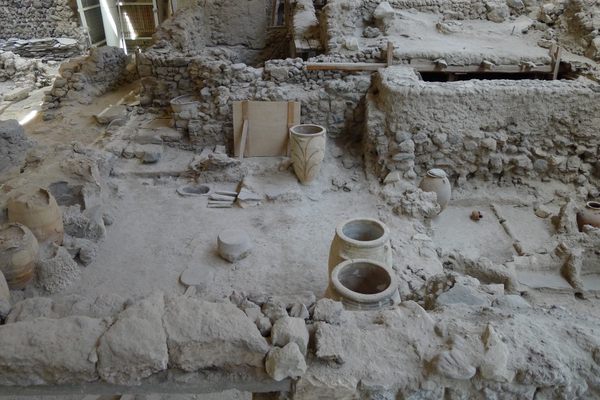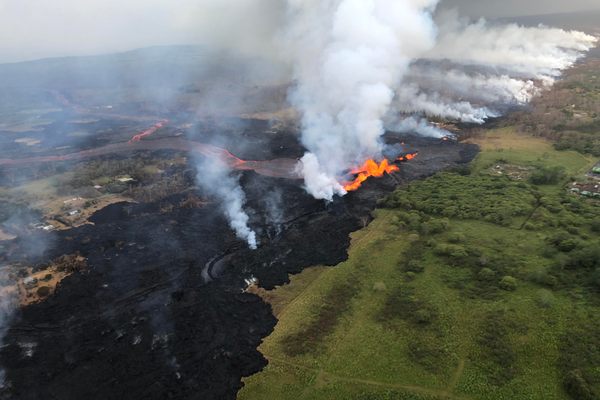What Makes a Lava Lake Stick Around?
There’s one at Kīlauea.

As lava continues to flow across Hawaii, threatening to cut off the remaining escape route for some communities, the Hawaiian Volcano Observatory reports that lava from two fissures is now streaming into a newly created lava pond.
A lava pond is, more or less, exactly what it sounds like—a collection of molten rock. These can form when lava flows hit a change in topography and start to move laterally instead of downslope. This sudden redirection sucks the heat from the lava (it is still very hot) and limits the size of these “perched lava ponds” to “at most a few hundred meters, under almost all circumstances,” according to a report in the Journal of Volcanology and Geothermal Research. These pools are a transient phenomenon, but eruptions can also form lava lakes, which, rarely, can persist indefinitely.
A lava lake is, again, pretty much what it sounds like—a lot of lava pooled in one place. They can form when a vent erupts into a crater, lava pours into a crater, or a vent builds a crater up around itself. Lava lakes can behave very differently from each other. One that formed in Kīlauea during the late 1960s and early 70s circulated evenly, in what seemed to be a steady state, while another lava lake would fill, then drain after gas pierced its surface, then fill and drain again. Even in a simple model made to try to understand the underlying mechanisms, the lakes exhibited “a remarkable richness of behavior,” one team of researchers wrote.
They have one common denominator, though: To last over time, a lava lake needs a heat source that can keep feeding energy into the system. There are very few places in the world where the conditions are exactly right. Kīlauea is one of them, though in this current eruption, one of its persistent lava lakes has been draining, a whole different kind of danger. (If it drops below the groundwater level, the magma and water mixed together could cause a steam-driven explosion.) There is a long-lasting, giant lava lake in the Democratic Republic of Congo, and another in Antarctica, which are both stable enough—for now.




















Follow us on Twitter to get the latest on the world's hidden wonders.
Like us on Facebook to get the latest on the world's hidden wonders.
Follow us on Twitter Like us on Facebook